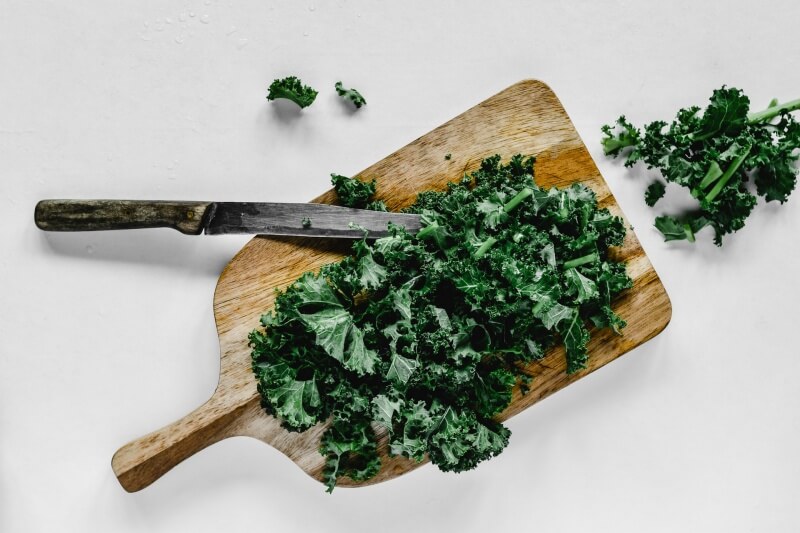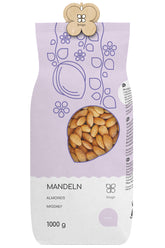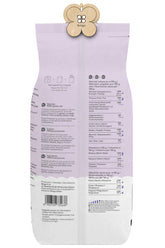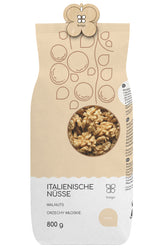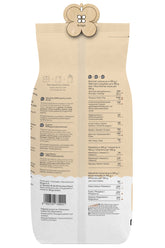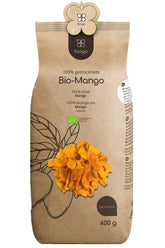A passing fad or a true treasure? Kale: Properties and nutritional values
- Is kale healthy?
- Vitamin A
- Vitamin C
- Kale contains more calcium than milk
- Who shouldn’t eat kale?
- How do you prepare kale dishes?
- Ingredients
- How to...
Kale is a vegetable from the cabbage family. Until recently, it wasn't fully associated with many of us, but today it's making its way into salons. Although its distinctive flavor and tough texture may still be a problem for some people, when properly prepared, it can be a truly delicious addition to dishes. It's also worth incorporating into your diet for its unique properties and nutritional value.
Is kale healthy?
Why should you eat kale? Because it's one of the most nutritious vegetables. It has a very positive effect on our health. It deserves a special place, especially because of its high content of vitamins A, K, and C, as well as calcium and potassium.
Vitamin A
Vitamin A is crucial for healthy eyes and good vision. It is also responsible for the proper condition of skin, hair, and nails. Furthermore, it supports the body's regenerative processes and strengthens the immune system.
Vitamin C
Vitamin C, which is abundant in kale, has a positive effect on the immune system. It is also important in cancer prevention because, along with many other antioxidants found in kale, it fights free radicals. It also has a positive effect on the cardiovascular system and prevents atherosclerosis. Eating kale is worthwhile for preventing cardiovascular disease. However, keep in mind that it must be eaten raw to take advantage of its potential in this regard.
Kale is also rich in vitamin K, which is responsible for a healthy skeletal system, increased bone density, and mineralization. It also supports the circulatory system by regulating blood clotting and thus reducing the risk of cardiovascular disease. Furthermore, vitamin K increases the absorption of one of the most important compounds for humans, vitamin D.
Kale contains more calcium than milk
In addition to vitamin K, this ingredient also makes kale good for bones and can be part of a diet to prevent osteoporosis. Together with potassium, calcium helps regulate blood pressure.
The benefits of kale don't end there. Kale, like most green cruciferous vegetables, contains negligible amounts of calories. When dieting, it's actually unnecessary to include it in your calorie count. Additionally, it contains quite a bit of fiber, which helps keep you full for a long time. Kale has a low glycemic index, meaning it doesn't cause a rapid spike in blood sugar levels. Therefore, kale is recommended for weight loss, as well as for diabetics or people with insulin resistance.
Who shouldn’t eat kale?
Despite its exceptional nutritional value, kale isn't for everyone. There are contraindications to its consumption. Due to its oxalate content, it shouldn't be consumed by people with kidney stones. It's also not recommended for patients with thyroid problems, as it contains goitrogens, which inhibit iodine absorption. However, it shouldn't be harmful in small amounts, especially if consumed after a thermal treatment that neutralizes the aforementioned compounds. Blood clotting disorders can also be a contraindication to consuming kale.
How do you prepare kale dishes?
To enjoy kale, it's worth preparing this distinctively flavorful vegetable properly. The kale season lasts from fall through most of winter. The slightly frozen leaves taste best.
When preparing dishes with these green leaves, be sure to remove the tough stems. Kale can be eaten raw—this is when it's healthiest—but it also tastes better when baked or fried, which softens its flavor and texture. This vegetable has a wide range of uses. Kale leaves can be used as a base for salads, as a garnish for cocktails, or as a one-ingredient dish: unassuming kale chips.
We recommend you try this quick kale pasta recipe. It's a perfect first date dish with this vegetable that will have you wanting more.
Ingredients:
2 handfuls of kale
3/4 cup whole wheat pasta 1 tablespoon walnuts 1 tablespoon sun-dried tomatoes or a handful of cherry tomatoes
1 teaspoon butter
50 g mozzarella salt, pepper
How to do...:
Cook the pasta al dente. Wash the kale , remove the tough stems, and tear the leaves into smaller pieces. Melt the butter in a pan. Add the kale. Cook for a while until it reduces in volume. Add crushed nuts, chopped dried or fresh tomatoes, and cooked pasta. Cook everything together for a few minutes, then add the diced mozzarella. Season with salt and pepper. Can be eaten hot or cold.
THE PUBLISHER'S CHOICE
Almonds 1 kg BIOGO
- £11.00
£13.00- £11.00
- Unit price
- / per
Walnuts 800 g BIOGO
- £8.00
£10.00- £8.00
- Unit price
- / per
Dried organic mango 400 g BIOGO
- £10.00
- £10.00
- Unit price
- / per
Dried White Mulberries 500 g ORGANIC
- £6.00
£7.00- £6.00
- Unit price
- / per
Dried organic figs 800 g BIOGO
- £27.00
- £27.00
- Unit price
- / per
Unpeeled buckwheat groats 1 kg BIOGO
- £3.00
£3.00- £3.00
- Unit price
- / per
Organic coconut flakes 500 g BIOGO
- £9.00
- £9.00
- Unit price
- / per
Organic oat flakes 600 g BIOGO
- £4.00
- £4.00
- Unit price
- / per
Organic cashew nuts 1 kg BIOGO
- £18.00
- £18.00
- Unit price
- / per
Milk thistle seeds 1 kg BIOGO
- £4.00
- £4.00
- Unit price
- / per




















































































































